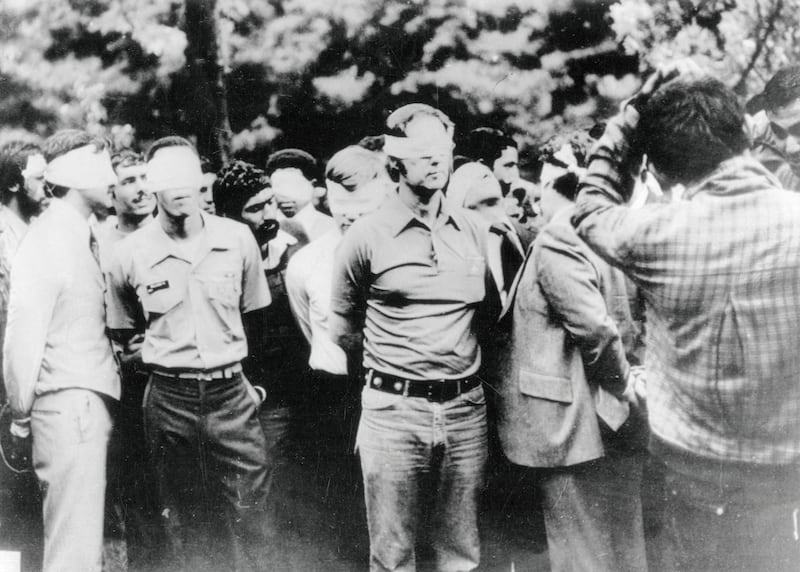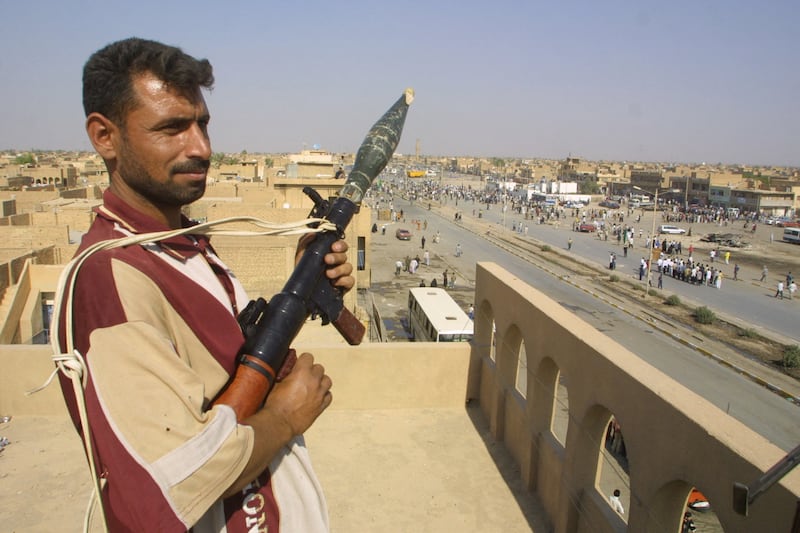The specter of the United States’ worst-ever foreign policy humiliation is hanging over D.C. on Saturday night as Ayatollah Ali Khamenei plots his response to President Donald Trump’s unprecedented attack on Iran.
A surprise raid on the U.S. embassy in Tehran in 1979 resulted in a 444-day hostage crisis, which helped to topple an American president and began a decades-long standoff between the two countries.
The lo-fi attack, carried out by a mob of student revolutionaries, succeeded in taking 66 U.S. personnel hostage. It crippled American credibility on the world stage and ensured that President Jimmy Carter was swept out of power in a landslide.
Security is far tighter now, but the devastating impact of that assault is a stark reminder that even U.S. military might cannot protect all Americans. Around 40,000 U.S. service personnel are currently stationed in the region. They are now preparing for reprisals from Iran.

Richard Haass, who advised Colin Powell and George W. Bush in the build-up to the Iraq War, warned that the Iranians had many levers they could pull to hurt the United States. “If you start going up that escalation ladder, they can act asymmetrically, as we said, with terrorism, militias, hostage-taking. It’s what they do,” he told CNN.
The former chair of the Council on Foreign Relations pointed out that Trump was no longer in control of the ramifications after dropping up to six never-before-used “bunker buster” bombs on the Iranian nuclear facility deep underground at Fordow. “We’ve got to prepare for the worst,” he said. “These are unprecedented times.”
Iranian state TV was quick to threaten major retaliation “Mr. Trump, you started it, and we will end it… Every American citizen or military personnel in the region is now a target.” The government-controlled network also aired a graphic of U.S. bases “within the fire range of Iran.”
While traditional Iranian military responses to Israel’s attacks in the current conflict have been largely ineffective, the devastating asymmetric battles fought in Iraq and Afghanistan demonstrate the scope of potential attacks on American targets. So too did the Oct. 7 attack on Israel, which killed more than a thousand people 18 months ago, sparking the current eruption of violence in the Middle East.

Iran has funded groups such as Hamas, Hezbollah, and dozens of other Shiite militia forces for decades. Recent military strikes by Israel and the U.S. have degraded some of these operations, but the prospect of a response through terrorist attacks remains an alarming prospect.
California Governor Gavin Newsom immediately linked Trump’s attack on Iran to the threat of blowback on American soil. He tweeted: “Following the President’s action in Iran, California’s State Threat Assessment Center is actively monitoring for any potential impacts in California. While there are no specific or credible counter threats we are aware of at this time, we urge everyone to stay vigilant and report suspicious activity.”
In the hours after the attack, key Iranian figures vacillated between downplaying the impact of the attacks and vowing to avenge them.
The fear is that the regime believes it must respond with disproportionate force to prop up its legitimacy and restore the threat of deterrence, Jonathan Panikoff, the director of the Scowcroft Middle East Security Initiative, told The New York Times: “Then you’re looking at a significant escalatory spiral that could get out of hand quickly.”
The post Americans Could Face Hostage-Taking or Terror Attacks After Trump Bombed Iran appeared first on The Daily Beast.




